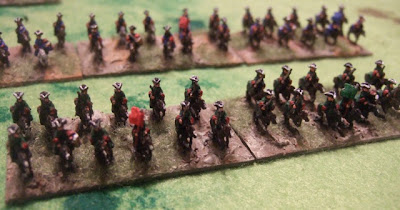 This is one of my favourite board games. It covers the whole of the Mediterranean basin from Gibraltar to the Black Sea at 50 miles to the hex. Counters are individual ships or squadrons of aircraft. I like Sixth Fleet and the other games in the series because they put naval combat into its proper strategic setting. Ships enable you to deliver troops where they are needed to secure your military-political objectives. Aircraft and ships enable you to sink the enemy's ships to prevent him doing the same. Logistics ships and bases allow you to maintain your fleet at fighting strength while you do all this.
This is one of my favourite board games. It covers the whole of the Mediterranean basin from Gibraltar to the Black Sea at 50 miles to the hex. Counters are individual ships or squadrons of aircraft. I like Sixth Fleet and the other games in the series because they put naval combat into its proper strategic setting. Ships enable you to deliver troops where they are needed to secure your military-political objectives. Aircraft and ships enable you to sink the enemy's ships to prevent him doing the same. Logistics ships and bases allow you to maintain your fleet at fighting strength while you do all this.Sunday, January 30, 2011
Crisis in the Middle East
 This is one of my favourite board games. It covers the whole of the Mediterranean basin from Gibraltar to the Black Sea at 50 miles to the hex. Counters are individual ships or squadrons of aircraft. I like Sixth Fleet and the other games in the series because they put naval combat into its proper strategic setting. Ships enable you to deliver troops where they are needed to secure your military-political objectives. Aircraft and ships enable you to sink the enemy's ships to prevent him doing the same. Logistics ships and bases allow you to maintain your fleet at fighting strength while you do all this.
This is one of my favourite board games. It covers the whole of the Mediterranean basin from Gibraltar to the Black Sea at 50 miles to the hex. Counters are individual ships or squadrons of aircraft. I like Sixth Fleet and the other games in the series because they put naval combat into its proper strategic setting. Ships enable you to deliver troops where they are needed to secure your military-political objectives. Aircraft and ships enable you to sink the enemy's ships to prevent him doing the same. Logistics ships and bases allow you to maintain your fleet at fighting strength while you do all this.Tuesday, January 25, 2011
Big Nostalgia Trip
Back in the early 1970s the old Birkenhead Market (it would burn down a few years later) had a stall selling second hand magazines. It was there that, aged ten or so, I spent my pocket money on a pile of old copies of Meccano Magazine.
A particular edition had an article on how to go about building up a model collection. Some basic tips on building kits, the merits of adopting a theme, and some thoughts on storing your masterpieces.
I was mesmerised by this idea. I spent ages rereading the article and building my own models. Some were better than others, any sense of a theme was largely limited to their being small scale as that was what my budget would run to, and they were never stored as securely as I’d have liked. Nonetheless they gave me hours of enjoyment.
Last night, the best part of forty years later, I was delighted to discover that the whole run of Meccano Magazine has been digitised and made available on line. You can find it at the marvellous nzmeccano site.
Could I find that very magazine article? Was my memory faulty? Could I perhaps be recalling another article from an entirely different magazine? I know that later on I’d buy Airfix Magazine, Scale Models and Military Modelling from the same stall. But no, there it was. From January 1971, two years before the death of Meccano Magazine as a glossy monthly, “16 year old Michael Day describes how Readers can start and maintain a … MODEL COLLECTION”.
A few years later I would realise that I could make tanks better than I could make aircraft. From there it was a small step into wargaming but I don’t have such a clear memory of a moment that tipped me over into a new hobby.
So thank you nzmeccano team and thank you Michael Day, wherever you may be now.
Sunday, January 23, 2011
Second Fleet


Saturday, January 22, 2011
Lippe Crossing - the playtest


The scenario sees Soviet forces swinging south towards the Ruhr and attempting to force a crossing of the Lippe, which is held at the moment by elements of II (British) Corps. The Soviet force was an under-strength Motor Rifle Regiment (two Motor Rifle Battalions in BTR70s and a Tank Battalion with T-62s) commanded by Colonel Sangarov.

The British had a mechanised infantry battalion (1st Cheshires) reinforced by a squadron of Chieftains from Royal Scots Dragoon Guards. Brigadier Connolly was in the tactical command post.

The table was bisected by the river with the Soviets deployed on the northern (right) bank (on the right hand side of the following picture). The countryside is mostly farmland but with a light industrial areas and one village. The river bank is often tree-lined so in some places it was possible for the attackers to get close to the bank without taking fire.

In the River Crossing scenario both sides start with fixed deployment. In this case they alternate deploying commands. Andy spread his battalions along the river and so forced Rob to follow suit. Rob took the decision to deploy his Chieftains in “penny packets” (one troop reinforcing each company). The only fixed crossing point was the railway bridge.

Andy decided to ignore this and send his tanks across the river where it flowed between wooded banks and where a factory unit partly covered his approach march. This being the case he was able to get his MTU-20 AVLB up to the river bank and laying its bridge by game turn 4.

By the time we ran out of time, the Soviet forces had established two shallow bridgeheads thanks to the amphibious BTR-70s and were about to complete the bridge that would allow the tanks to cross.

Thursday, January 20, 2011
Lippe Crossing

This Saturday I'm running another game of Gold War Commander. The Lippe Crossing game will cover Soviet attempts to establish a bridgehead on the south side of the River Lippe, a right tributary of the Rhein just north of the Ruhr.
Ooooooooh!
Sunday, January 16, 2011
Redevelopment Underway
Wednesday, January 12, 2011
Redevelopment
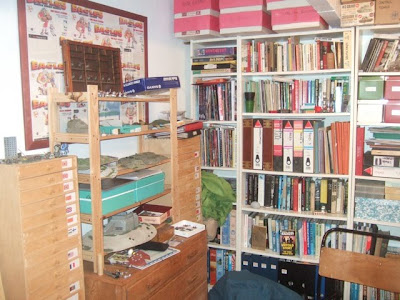

I've decided the room is too small to hold a permanent gaming table. I shall continue to annex the kitchen table for large games.
Sunday, January 9, 2011
Great Northern War - part four
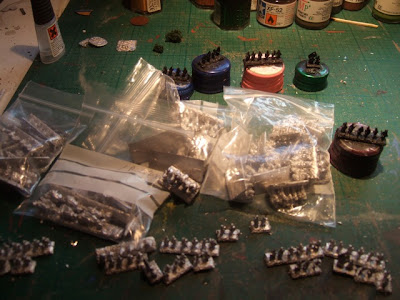
Thursday, January 6, 2011
Great Northern War - part three
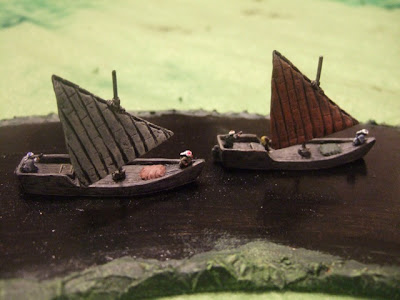


Wednesday, January 5, 2011
Great Northern War - part two



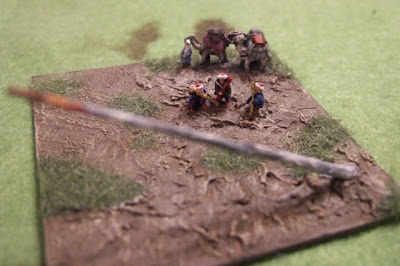
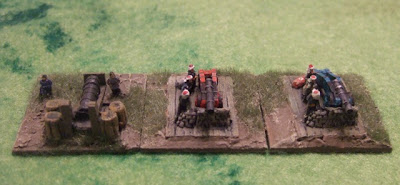
Tuesday, January 4, 2011
Great Northern War - part one

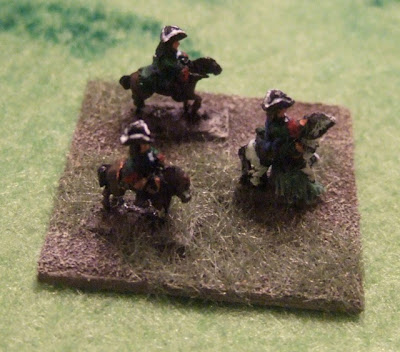

 Next come the Semionevski Guards in their blue coats and yellow-trimmed tricorns. Again, a flag is to be added.
Next come the Semionevski Guards in their blue coats and yellow-trimmed tricorns. Again, a flag is to be added.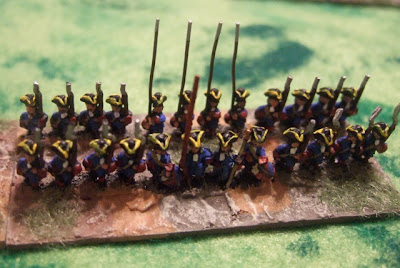 The Baccus pack doesn't include any figures for dismounted dragoons so I've based the cavalry as "Horse". These are Viatski Regiment. The plain flags are until I can find the historically correct colours.
The Baccus pack doesn't include any figures for dismounted dragoons so I've based the cavalry as "Horse". These are Viatski Regiment. The plain flags are until I can find the historically correct colours.  The Baccus artillery is lovely. Definitely my favourite elements.
The Baccus artillery is lovely. Definitely my favourite elements.







